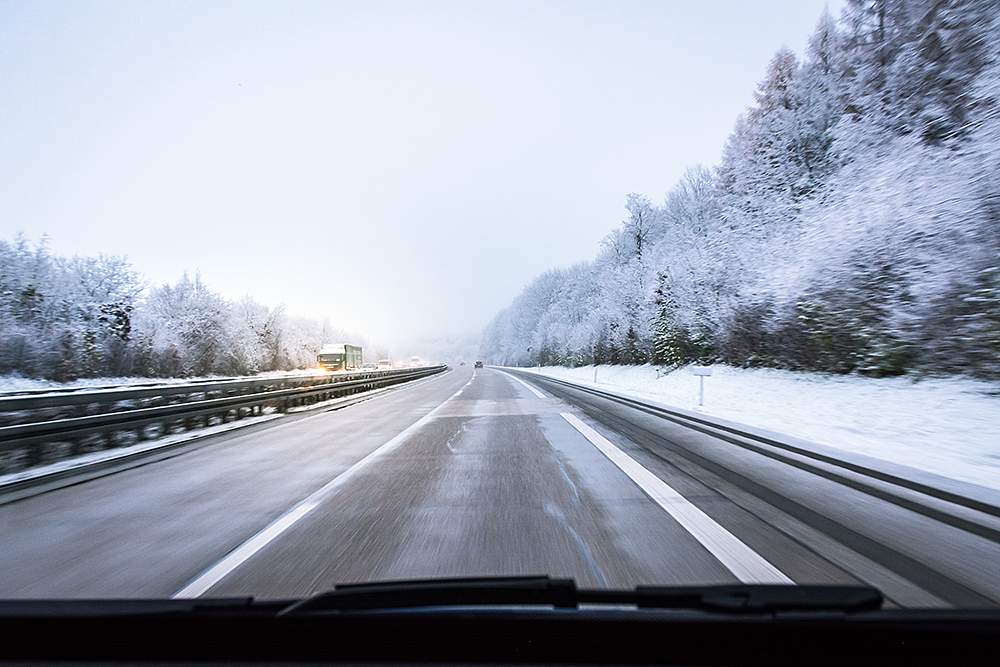
Even if you have been cruising down the highway with no problem, an overpass or bridge can be unexpectedly icy. Use extra caution on bridges and overpasses, where the road surface freezes more quickly. Bridges and overpasses are also common spots for black ice to form. Black ice is most commonly found on roads that run around bodies of water (such as lake and rivers), in tunnels, and in shady or rural areas.Make sure there is plenty of traction between your tires and the road surface.

Worn tires will make it much more difficult for you to drive on black ice. Make sure your tire tread is in good condition as part of your basic car maintenance routine.This will make your more visible to the other cars on the road. Drive with your low beam headlights on even if it is daytime.In fact, four-wheel drive vehicles have no advantage over regular cars when it comes to driving on black ice, so be sure to take the necessary safety precautions no matter what type of vehicle you are driving. While four-wheel drive vehicles are great for driving in heavy snow, you're on your own when it comes to driving on black ice. Don't think you're invincible just because you drive a truck or a big sports utility vehicle.Be prepared in case other cars start to slide.
#Black ice driver how to#
Even if you feel confident that you know how to drive safely on black ice, that doesn't mean the driver in front of you does. When driving on black ice road conditions, stay well behind the car in front of you (at least a couple of hundred feet), this is definitely not the time to tailgate.


Here are some tips on how to drive on black ice: Because black ice is so tricky to detect, a driver may not realize there is an icy road surface until his car begins to slide. Keep an eye out for pavement that is slightly darker and a little duller looking than the rest of the road surface, this may indicate that black ice is present. While a shiny road surface indicates an obviously wet or icy road, a road covered with black ice will look a little different. Black ice can occur if temperatures are near the freezing mark or even a few degrees above it. And temperatures don't have to be below freezing for black ice to develop. Indeed, melted snow or ice that refreezes may still look deceivingly like a dry road. While a snow-covered road can be an obvious driving hazard, a road that just looks wet can also be deceivingly slippery.īlack ice is a dangerous wintertime hazard because the icy road may not always be visible to the driver. Winter driving conditions can be tricky for even the most experienced drivers.


 0 kommentar(er)
0 kommentar(er)
